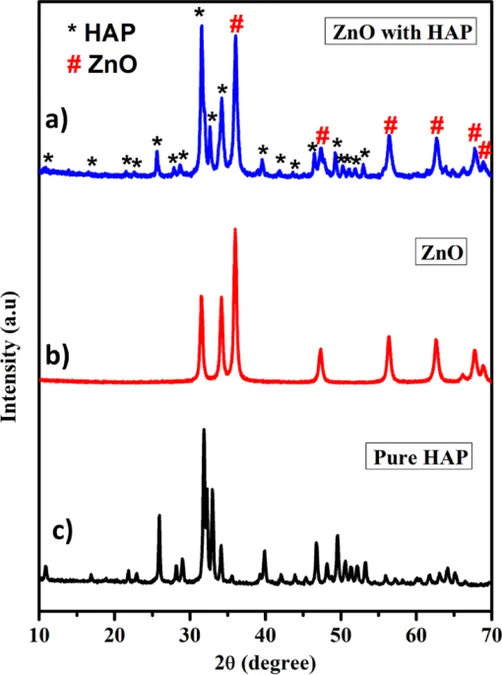
Unleashing a Revolutionary Solution: The Zinc Oxide-Hydroxyapatite Nanocomposite for Wastewater Treatment
2025-08-29
Author: Siti
Water Pollution: A Pressing Concern
Water, our most essential resource, is increasingly threatened by harmful contaminants like dyes, pesticides, and antibiotics. The presence of these pollutants in water poses serious health risks to both humans and wildlife, leading to alarming issues like skin irritation, gastrointestinal problems, and long-term health complications.
The Deadly Dyes and Antibiotics Problem
In particular, methylene blue, a common dye in the textile industry, wreaks havoc on aquatic ecosystems. Meanwhile, antibiotics like ciprofloxacin, which disrupt bacterial growth, are becoming environmental hazards, contributing to the rise of antibiotic-resistant bacteria.
Searching for Effective Solutions: Limitations of Current Treatments
Traditional water treatment processes can be expensive and often insufficient, merely relocating pollutants rather than eliminating them. Advanced Oxidation Processes (AOPs), harnessing powerful hydroxyl radicals, have emerged as promising alternatives. AOPs eliminate contaminants, but their effectiveness varies based on the materials used.
The Game-Changer: Zinc Oxide-Hydroxyapatite Nanocomposite
Enter Hydroxyapatite (HAp), a biocompatible material vital for medical applications, now joining forces with Zinc Oxide (ZnO). Combining these two materials enhances their light absorption and photodegradation capabilities, making them formidable allies against water pollution.
ZnO, known for its exceptional photocatalytic properties, gains an even greater edge when integrated with HAp, enhancing its ability to degrade environmental pollutants swiftly.
Innovative Approaches and Findings
Recent studies show that ZnO@HAp nanocomposites outshine their separate counterparts in degradation efficiency. Using various environmentally friendly synthesis methods, researchers have crafted composites that excel in breaking down methylene blue and ciprofloxacin under UV light.
Breakthrough Results in Photocatalysis
Lab experiments demonstrate near-total degradation of methylene blue within just five minutes using ZnO@HAp. In contrast, traditional ZnO struggles to achieve even 40% efficiency within the same timeframe.
Cost-Effectiveness and Environmental Safety
Beyond performance, cost-effectiveness is crucial. Researchers developed these promising photocatalysts using straightforward and low-cost methods. What's more, their stability over multiple uses implies they can significantly reduce the financial burden on wastewater treatment facilities.
Catalytic Mechanism: The Science Behind the Success
The enhanced efficiency comes from the unique combination of ZnO's rapid electron transfer abilities and HAp's high adsorption capacity. This synergistic relationship creates a plethora of hydroxyl radicals, accelerating the breakdown of contaminants.
A Path Forward: Implications for Environmental Management
The ZnO@HAp composite not only holds the potential for high-efficiency wastewater treatment but also offers a step forward in combating global water pollution. As cities and industries grapple with the effects of contaminated water sources, innovations like this nanocomposite could provide pivotal solutions for sustainable water management.
In Conclusion
As the world becomes increasingly aware of the dire state of water quality, the zinc oxide-hydroxyapatite nanocomposite represents a promising frontier in environmental science. With its remarkable stability and efficiency, this innovative solution could pave the way for safer water sources and healthier ecosystems.



 Brasil (PT)
Brasil (PT)
 Canada (EN)
Canada (EN)
 Chile (ES)
Chile (ES)
 Česko (CS)
Česko (CS)
 대한민국 (KO)
대한민국 (KO)
 España (ES)
España (ES)
 France (FR)
France (FR)
 Hong Kong (EN)
Hong Kong (EN)
 Italia (IT)
Italia (IT)
 日本 (JA)
日本 (JA)
 Magyarország (HU)
Magyarország (HU)
 Norge (NO)
Norge (NO)
 Polska (PL)
Polska (PL)
 Schweiz (DE)
Schweiz (DE)
 Singapore (EN)
Singapore (EN)
 Sverige (SV)
Sverige (SV)
 Suomi (FI)
Suomi (FI)
 Türkiye (TR)
Türkiye (TR)
 الإمارات العربية المتحدة (AR)
الإمارات العربية المتحدة (AR)